Two block A and B are separted by some distance and tied by a string as shown in the figure . The force of friction in both the block at t=2s is

4N(→),5N(←)
2N(→),5N(←)
0N(→),10N(←)
1N(←),10N(←)
The correct Answer is:D
(f1)max=μ1m1g=6N
(f2)max=μ2m2g=10N
At t=2s,F'=4N
Net pulling force , (f1)max=F'−F'=11N

Total maximum resisting force ,
F2=(f1)max+(f2)max=16N
Since F1<F2, system will not move and free body diagrams of the two block are as shown in figure
Topper's Solved these Questions
- BOOK - DC PANDEYCHAPTER - LAWS OF MOTIONEXERCISE - Objective Question32videos
LAWS OF MOTION
- BOOK - DC PANDEYCHAPTER - LAWS OF MOTIONEXERCISE - Comprehension9videos
LAWS OF MOTION
- BOOK - DC PANDEYCHAPTER - LAWS OF MOTIONEXERCISE - Exercise 8.52videos
LAWS OF MOTION
- BOOK - DC PANDEYCHAPTER - KINEMATICS 1EXERCISE - INTEGER_TYPE15videos
KINEMATICS 1
- BOOK - DC PANDEYCHAPTER - LAWS OF THERMODYNAMICSEXERCISE - Level 2 Subjective18videos
LAWS OF THERMODYNAMICS
Similar Questions
Find the force of friction acting between both the blocks shown in the figure.
View SolutionTwo blocks of same mass are kept on a horizontal rough surface as shown in the figure. Coefficient of friction between the blocks and surface is 0.1. A force of 16 N is applied on one block as shown in figure. Find the tension (in newton) in the string.
View Solution
Knowledge Check
- Question 1 - Select One
As shown in the figure , the friction force acting on the block is
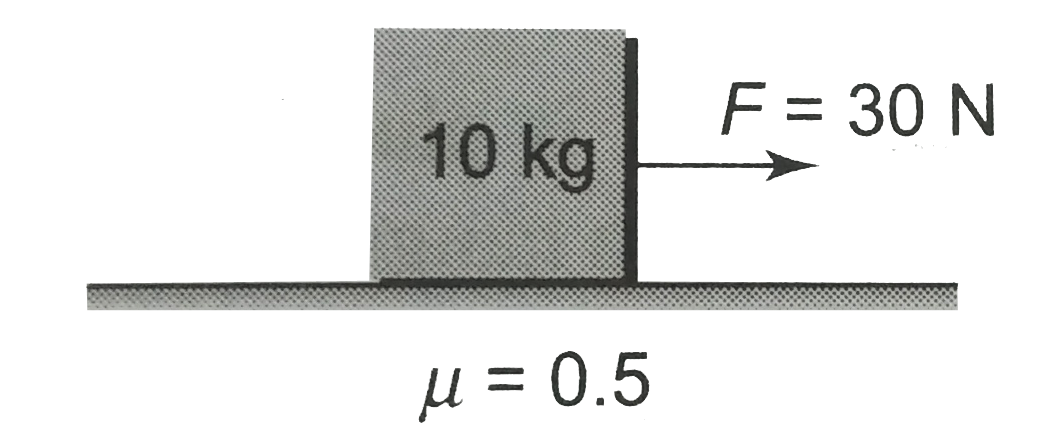 A50NB30NC20NDNone
A50NB30NC20NDNone - Question 2 - Select One
The friction force acting on the block at time t=4s will be
 A50NB30NC25NDNone
A50NB30NC25NDNone - Question 3 - Select One
Two blocks A and B are lying on the table as shown in the figure. The coefficient of friciton between block A and block B is μ. The coefficient of friction between block B and ground also μ. An external force F is applied in the direction shown. The maximum value of the force F that can be applied without moving the blocks.
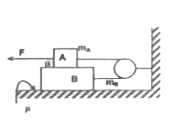 Aμ(2mA+mB)gBμ(mA+mB)gCμ(2mA+mB/2)gDμ(3mA+mB)g
Aμ(2mA+mB)gBμ(mA+mB)gCμ(2mA+mB/2)gDμ(3mA+mB)g
Block A of mass 5 kg is resting on a frictionless floor. Another block B of mass 7kg is resting on it as shown in the figure. The coefficient of friction between the blocks is 0.5 while kinetic friction is 0.4. If a force of 100 N is applied to block B, the acceleration of the block A will be (g=10ms−2) :
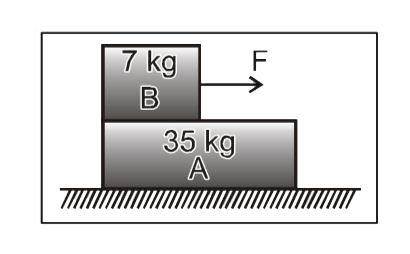 View Solution
View SolutionTwo blocks A and B are connected by as string as shown in figure. Friction coefficient of the incline plane and block is 0.5. The mass of the block A is 5kg. If minimum & maximum values of masses of the block B for which the block remains in equilibrium are m1 & m2 then find value of (m2−m1).
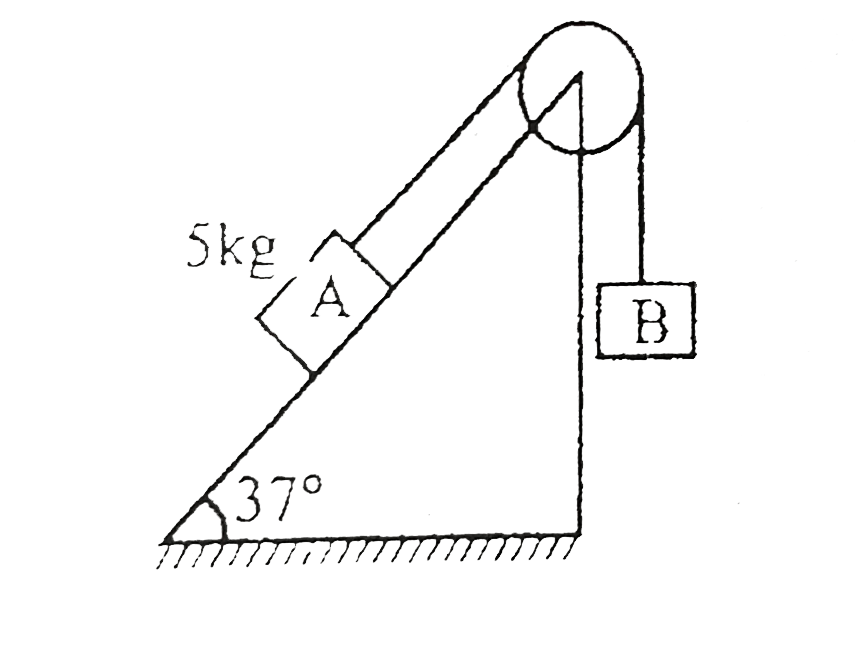 View Solution
View SolutionIf the mass of block is 1 kg and a force of 10 / √3 N is applied horizontally on the block as shown in the figure . The frictional force acting on the block is :
 View Solution
View Solution
Two blocks A and b are placed on a table and joined by a string . The limitaing frition for both blocks is F .The tension in the string is T. the forces of friction acting on the blocks are FAandFb An external horizontal forceP=3F/2 acts on A, directed aways from B.View SolutionA block A of mass 100 kg rests on another block B of mass 200 kg and is tied to a wall as shown in the figure. The coefficient of friction between A and B is 0.2 and that between B and ground is 0.3. The minimum force required to move the block B is (g=10ms−2)
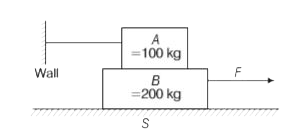 View Solution
View Solution

